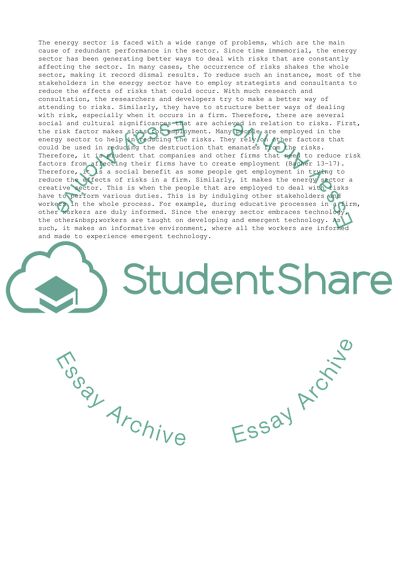Cite this document
(The Social and Cultural Significance of Risk as a Concept Coursework, n.d.)
The Social and Cultural Significance of Risk as a Concept Coursework. Retrieved from https://studentshare.org/management/1792343-corporate-social-responsibility-question-you-have-been-recruited-by-an-energy-research-and-consultancy-group-to-contribute-to-a-report-on-risk-within-the-energy-sector-the-group-believes-that-large-energy-corporations-may-be-failing-to-account-adequate
The Social and Cultural Significance of Risk as a Concept Coursework. Retrieved from https://studentshare.org/management/1792343-corporate-social-responsibility-question-you-have-been-recruited-by-an-energy-research-and-consultancy-group-to-contribute-to-a-report-on-risk-within-the-energy-sector-the-group-believes-that-large-energy-corporations-may-be-failing-to-account-adequate
(The Social and Cultural Significance of Risk As a Concept Coursework)
The Social and Cultural Significance of Risk As a Concept Coursework. https://studentshare.org/management/1792343-corporate-social-responsibility-question-you-have-been-recruited-by-an-energy-research-and-consultancy-group-to-contribute-to-a-report-on-risk-within-the-energy-sector-the-group-believes-that-large-energy-corporations-may-be-failing-to-account-adequate.
The Social and Cultural Significance of Risk As a Concept Coursework. https://studentshare.org/management/1792343-corporate-social-responsibility-question-you-have-been-recruited-by-an-energy-research-and-consultancy-group-to-contribute-to-a-report-on-risk-within-the-energy-sector-the-group-believes-that-large-energy-corporations-may-be-failing-to-account-adequate.
“The Social and Cultural Significance of Risk As a Concept Coursework”, n.d. https://studentshare.org/management/1792343-corporate-social-responsibility-question-you-have-been-recruited-by-an-energy-research-and-consultancy-group-to-contribute-to-a-report-on-risk-within-the-energy-sector-the-group-believes-that-large-energy-corporations-may-be-failing-to-account-adequate.


